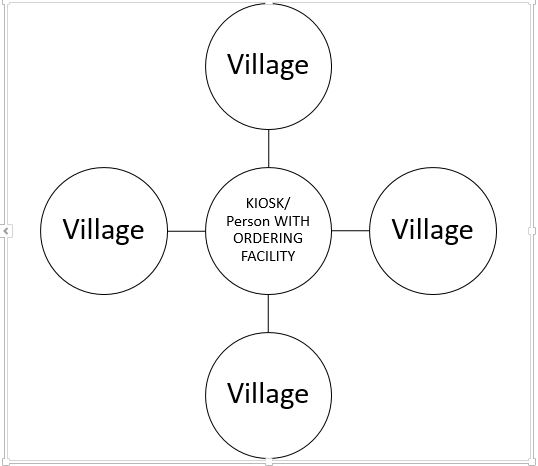Few days ago I was on the vacation. Seating at my home in the remote village of Kolhapur district of Maharashtra state, I was trying to compare some LED TV models for my home. I was very sure to buy it from the city as no E commerce portal would provide service in rural Maharashtra.
Just for sake of the curiosity I tried to check it with few E commerce portals such as Flipkart, Snapdeal, and Amazon etc. I was amazed to see green signal on amazon as soon as I entered my pin code. For safe side I called customer care and assured for the delivery. With lot of questions in mind I placed order for a LED TV on amazon.
Within 7 days it got delivered at given address. It was entirely different feeling for me to receive E commerce service at village where no one believed even it would be delivered in safe condition. Once it got delivered, people around my home, neighbors gathered to see TV delivered through postal service (Though it was a courier service).
I was forecasting the future of the e commerce and a b- school student in me was trying to find out challenges and opportunities in future for this new concept. E commerce in rural India.
This was to discuss opportunities, challenges and their solutions for e commerce in Rural India:
Opportunities:
Innovation in mobile technology, penetration of the internet and awareness among the youth regarding e commerce have brought tremendous opportunities for e commerce in rural India.
Because of the innovation in technology, rural people are getting access to smartphones. They have become extremely affordable for these people. Low data rates with cheap smartphones is witnessing new wave of opportunity.
As of June 2014, nearly 50% of the Active Internet Users (AIU) in rural areas accessed internet using mobile phones, community service centers (CSC) and cyber cafes. 38% of the AIU use mobile phone as the main access point.
Also per capita disposable income in rural India is rising. Rural consumer is traditionally spending through brick and mortar stores. Hence they are willing to spend. Also rural consumer is price sensitive, looks for the minimum price. E commerce portals provides minimum price, and hence if we able to change the consumer purchase behavior, rural India will see tremendous e commerce growth.
Amazon is able to deliver in rural India right now. This has been achieved with integration of logistics network with India post and other logistic services, but there are some challenges.
Challenges:
Lack of awareness and trust issue
Rural people are not aware about the e commerce services. I conducted survey through mock questions in my village as well as nearby villages. I asked simple question to 50 random people in age group of 20 to 55. (Collage students as well as elders). – Do you know about e commerce or Flipkart, Amazon, Snapdeal etc? And what they do?
Only 19 people are known about the e commerce services and 16 of them are collage students. Elders are not aware about this. Hence definitely this youths- college students will be the future drivers of e commerce in rural India.
Also people have issue with the trust in e commerce. They are not sure to pay before they see what they want to purchase. People don’t know how to use the app and how much is it trust worthy. They worry for their money and hence they are ready to spend some more to buy things from brick and mortar store. This is the real bond we need to break for the growth of e commerce in rural India.
Changing traditional behavior
Rural consumers have traditional purchasing behavior which is difficult to change. They are habitual to touch and feel purchasing and in addition to this trust issue motivate this behavior.
Efficient supply chain:
We need to innovate supply chain which will be able to reach up to the villages in India. Amazon has already done that with tying up with India-Post. Amazon can leverage this strength through extensive promotion in rural market and hence it will definitely get first mover advantage.
Solutions:
Hub and spoke model to transform purchasing behavior
Indian Consumer has two basic purchase characteristics:
- He wants to pay once he receives the good
- He look for the lowest price possible with sufficient quality
Once I ordered TV, few people from my village asked me to order few things for them but they will pay once they receive those things. This gave me the idea of Hub and spoke model to cater to rural India.
If company like amazon opens a small kiosk for few villages nearby, with ordering facility and COD facility. Person at the Kiosk will place the order to the company. He will ensure for COD for the customer. Or he can pay through his Credit/ debit card and then get the money from the customer.
This will help in transition of the customer purchasing behavior in long term. Along with this he will get to know about how he can order on his own. Ultimately this will solve to issues:
- Trust Issue with COD
- Customer purchasing behavior transition issue in long term
This will be cost adding but long term and viable solution to transform rural consumers into e commerce consumers.
This can be even more simplified by getting one educated person who can place order and be the bond of trust between two parties.
Logistic Issues:
India Post has extreme connectivity with 3 Lakh villages. Along with this in recent time India Post has seen tremendous technology upgradation and hence this will be very efficient and cost effective solution.
Every city is connected with all travel services. Within 36 Hours parcel can be sent to the city hub all over the country. Hence tie-ups with these travel partners will solve major issues of logistics and quick delivery up to the city level. Reaching to the village is main task and challenge, but all these high earning villages are connected with good roads and transportation facilities. Hence this challenge became slightly simpler.
E Commerce has future growth in tier three cities and the villages. It will see phenomenal growth because of large base. But the trust will act as a bubble. It should not burst out by any mean. Because all these markets have trust factor as basic consideration. Once e commerce companies build the trust factor then they can survive in long term. But if it breaks, it will fall under its own weight.


